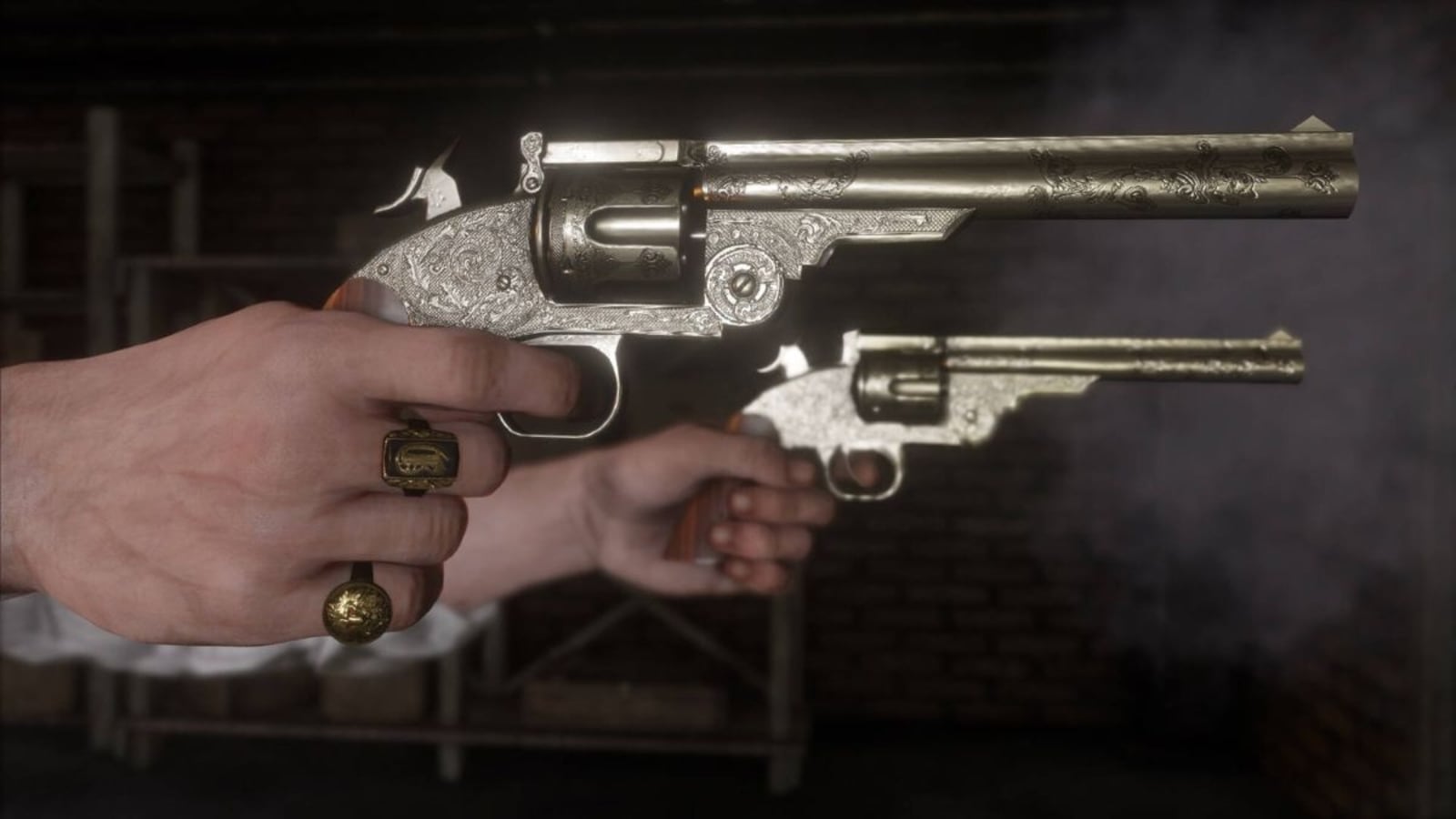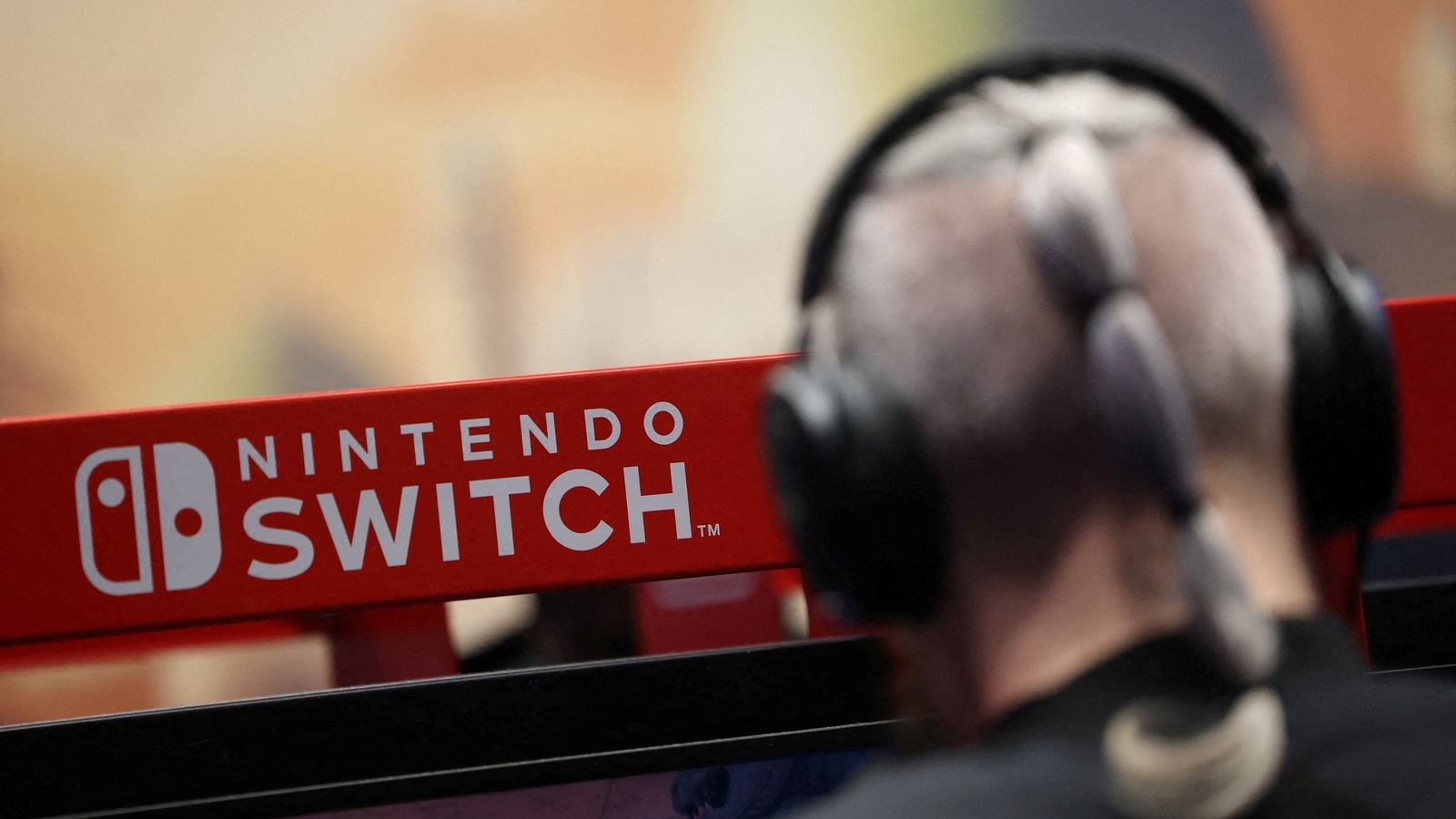Verdict
Even though it doesn’t fit larger plates, the Russell Hobbs Scandi Digital Microwave is not as small as a 17-litre capacity may lead you to believe. It stands out among its budget peer group due to the addition of a couple of simple auto-cook programmes that calculate the cooking time according to the food’s weight. While the wood-imitation design is not for everyone, the handle is sturdy and the build is generally of good quality. The control panel adds another step to activating the microwave, but it’s straightforward enough once you get the hang of it.
Pros
- Auto-cook programmes
- Affordable
- Good cooking results
Cons
- Fits smaller plates only
- Not the most intuitive
Introduction
While many pricier microwaves boast higher power levels and various combi capabilities, there is still a market for affordable and smaller appliances. With a 17-litre capacity and 700W power, the Russell Hobbs Scandi Digital is among the latter, catering to those needing a straightforward microwave.
An array of buttons here means it requires a bit of getting used to and the small-ish cavity doesn’t fit bigger dinner plates, but the Scandi Digital stands out from its budget-end peers because of its auto-cook programmes.
Design and features
- Wood-imitation design elements with sturdy handle
- Clear display but controls require some getting used to
- Auto-cook programmes are handy
The “Scandi” part of the Russell Hobbs Scandi Digital Microwave comes from the wood-imitation design elements: the prominent handle and a band around the time and weight setting knob. That’s a common theme with the company’s other products in this line, such as the Scandi Portable Mini Cooler & Warmer.
Combining shiny glass, plastic and metal with imitation wood is a very particular look and is likely to have a Marmite effect. The Scandi Digital is available in black, grey, and white, while the imitation wood is reminiscent of walnut for all these options.
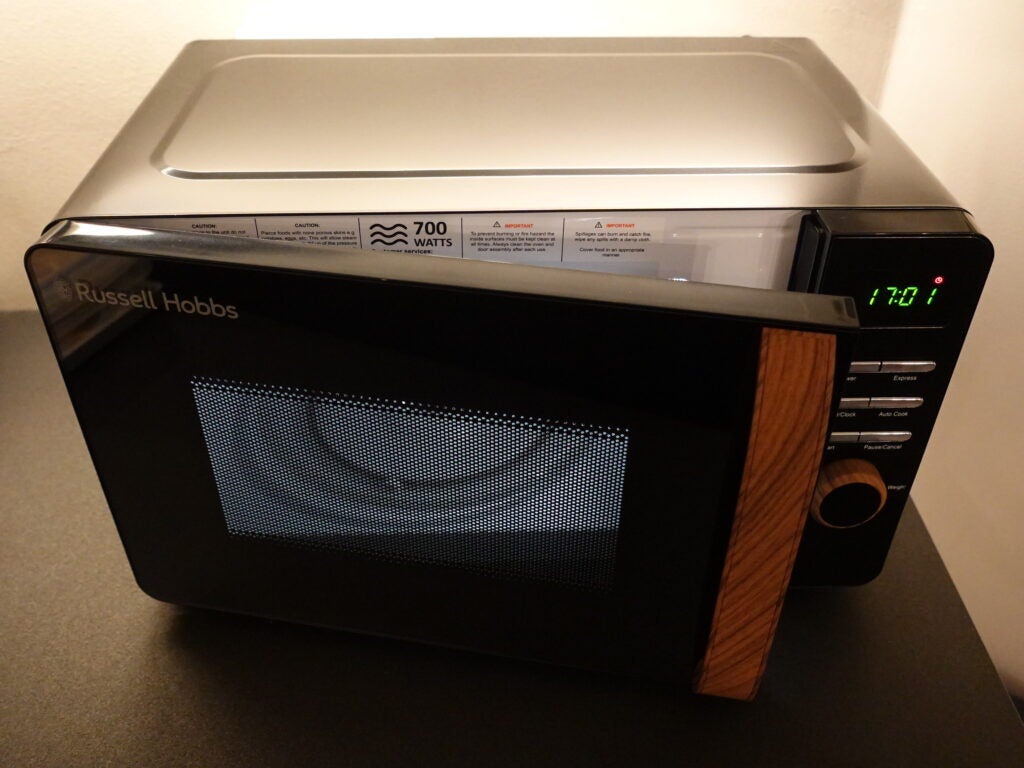
The imitation wood here made me think of 70s vinyl wrap, giving the microwave a vaguely retro look (though obviously not reflecting what microwaves really looked like in the 70s). The soft-grip quality of the wood-imitation material feels pleasant and smooth to the touch, but like a lot of plastic of this ilk, it might get a bit sticky in the long run.
Although it has a lower capacity, the 17-litre Scandi Digital is actually larger than the 20-litre Beko MOC20100, both in terms of outer measurements and the cavity itself. While the circa 120mm cavity height difference was particularly noticeable, the Scandi Digital is also about 110mm wider. Yet, this added width still doesn’t fit a standard dinner plate and the turntable here is only 245mm in diameter.
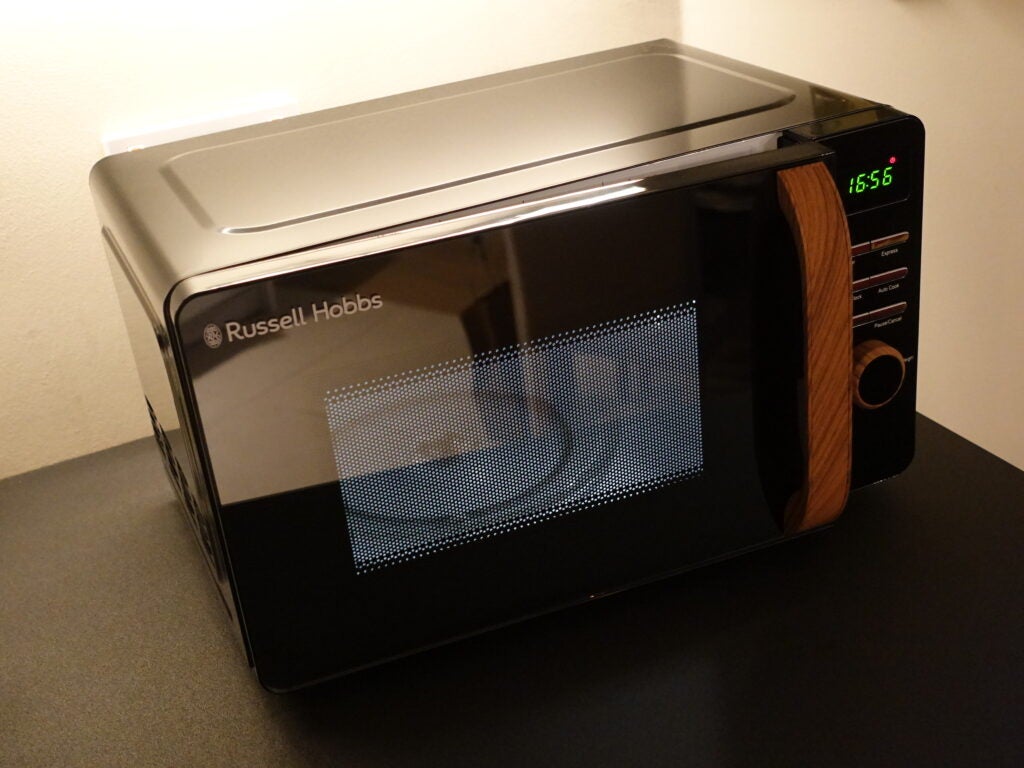
The control panel consists of a display, six buttons and the aforementioned knob. The screen is very clear and impressively features two colours: green for the time and/or weight displayed in large numbers, and red to show which function (Microwave, Auto, Defrost or a clock icon designating standby) and/or power level (High, Medium High, Medium, Medium Low and Low) has been activated.
The metallic plastic-covered buttons are Power, Express, Defrost/Clock, Auto Cook, Start and Pause/Cancel. While setting the time or weight of food (for defrosting or other auto programmes) is very easy, it’s not possible to start microwaving by setting the time and pressing go. Instead, you have to press the Power button first to confirm the power level, then choose a time using the knob and press the Start button.
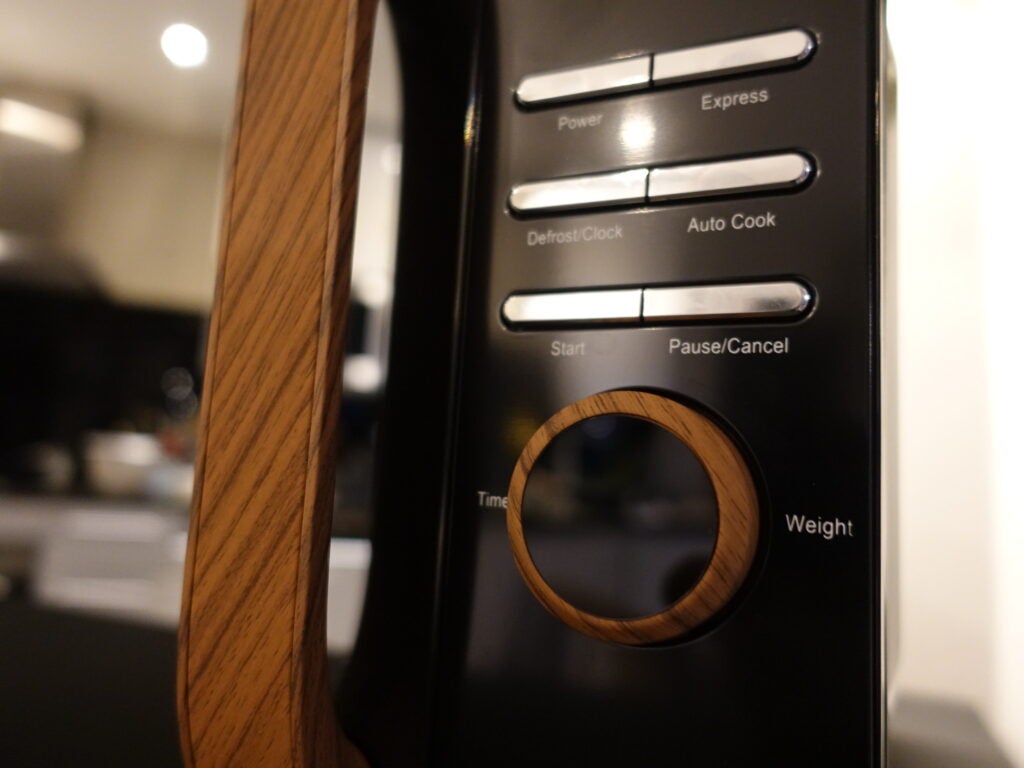
The Express button, meanwhile, automatically proposes 30secs of cooking time – but you need to press Start again to confirm. Pressing the Express button repeatedly will add more time in 30sec intervals. But the quickest way to start the microwave is by simply pressing the Start button, which will automatically offer a 1min cooking time.
The auto-cook menu has eight programmes, for reheating food and microwaving popcorn, beverages, pizza, sliced potatoes, vegetables, meat and fish. These are handy shortcuts for someone unsure of how long to heat their food, calculating the cooking time according to its weight.
Every time a button is pressed, the microwave makes a beeping sound, which can’t be regulated. However, there is a child lock function that can be activated by holding down the Pause/Cancel button for 3secs.
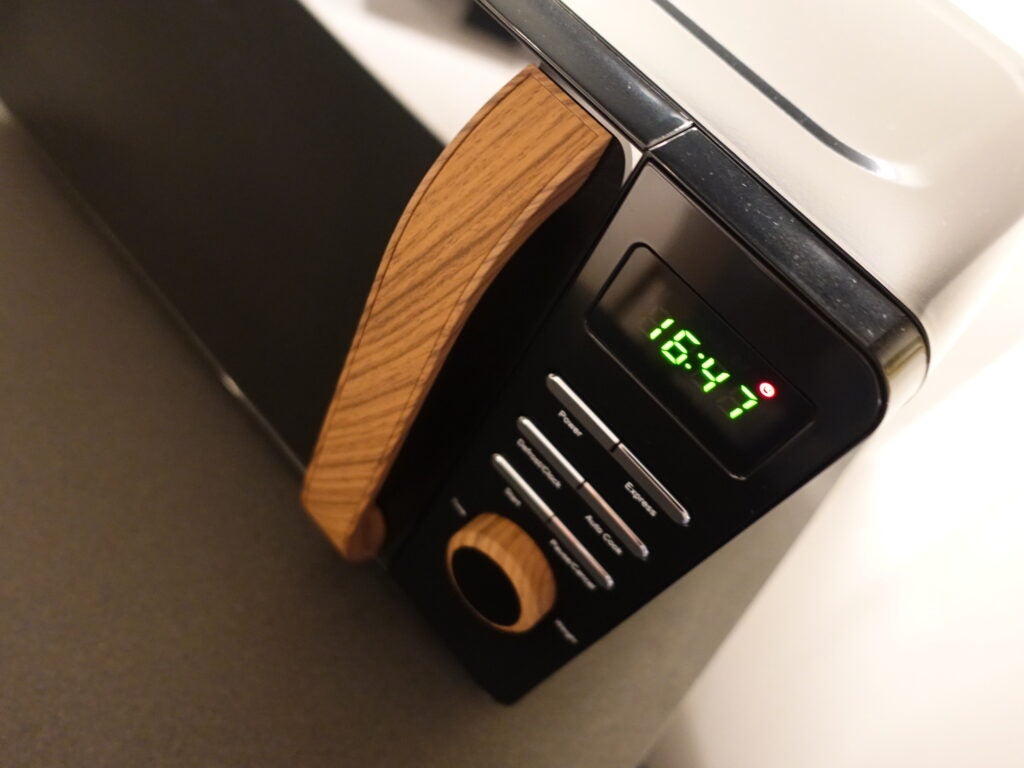
Performance
- Defrost function is for meats and fish only
- Weight-based reheat function proves handy
- Decent cooking time for raw baked potato
Although the Russell Hobbs Scandi Digital Microwave occasionally showed some unevenness, it managed to reheat and cook food within a decent time frame.
As the weight-based defrost programme is meant for meat, fish and seafood only, I opted for the medium-low (40%) power level to defrost two slices of white bread. After 30secs, I stopped to flip over the bread and noted that the inner corners where hot, while the rest remained cold on my thermal camera. After another 30secs, there was one very noticeable cold streak on the bread, although it was no longer icy.
I also tried microwaving the frozen bread at full power, which led to one hot corner and some colder spots after 30secs, having flipped the slices over halfway through. Lower power is definitely key here for even defrosting.
Turning to auto programmes, I used the reheat function (A2) to heat 200g of fridge-cold cooked rice with two tablespoons of water stirred in, which took 2mins40secs. The rice came out pretty evenly heated, measuring 92°C in the middle and 81°C around the edges. Stirring it brought it to the even and safe temperature of 81°C.
Cooking a raw 325g fridge-cold potato took only 8mins in the microwave (plus standing time). After 6mins, having flipped the oiled and salted potato halfway through, it already measured 100°C in the middle, with the temperature gauge going in smoothly.
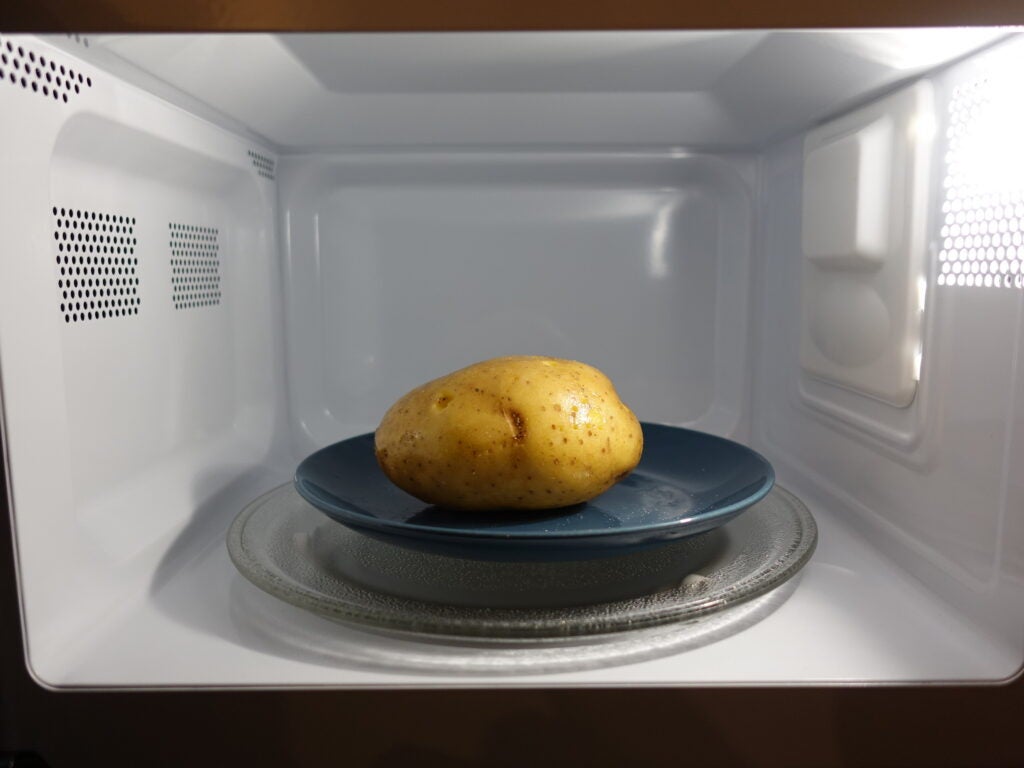
Cut open, some unevenness was visible – and also apparent on the thermal camera – along one outer edge of the potato, while the middle was already cooked and fluffy. Since that one side still had an apple-like crunch to it, I closed the potato back up and microwaved it for a further 2mins. By that stage, its skin was starting to get a bit wrinkly and the middle quite mushy, but the potato came out with a decent texture overall.

Latest deals
Should you buy it?
If you want an affordable microwave with some handy shortcuts, then this cheap model is a good choice.
If you regularly microwave larger quantities of food or need any extra cooking functions, then look elsewhere
Final Thoughts
The Russell Hobbs Scandi Digital Microwave is affordable and even boasts a couple of auto-cook programmes. But, like the supposedly larger-capacity Beko MOC20100, it doesn’t fit standard dinner plates. While the Scandi Digital doesn’t have as small a footprint as the MOC20100, it features a slightly taller cavity, allowing for somewhat taller containers to be used.
For those looking for more frills, such as combi or grill functions, the pricier Sharp YC-GC52FU-B, or even more high-end the Sage Combi Wave 3 in 1, might be a better option.
How we test
Unlike other sites, we test every microwave we review thoroughly over an extended period of time. We use industry standard tests to compare features properly. We’ll always tell you what we find. We never, ever, accept money to review a product.
Find out more about how we test in our ethics policy.
FAQs
This microwave has a maximum power of 700W, so will cook slower than more powerful models.
No, it has a rotating plate 245mm in diameter.
It has eight programmes, for reheating food and microwaving popcorn, beverages, pizza, sliced potatoes, vegetables, meat and fish.
Sustainability
TrustedReviews’ holds the fact that global warming is not a myth as a core value and will continuously endeavor to help protect our planet from harm in its business practices.
As part of this mission, whenever we review a product we send the company a series of questions to help us gauge and make transparent the impact the device has on the environment.
We currently haven’t received answers to the questions on this product, but will update this page the moment we do. You can see a detailed breakdown of the questions we ask and why in our sustainability info page.
Verdict
Even though it doesn’t fit larger plates, the Russell Hobbs Scandi Digital Microwave is not as small as a 17-litre capacity may lead you to believe. It stands out among its budget peer group due to the addition of a couple of simple auto-cook programmes that calculate the cooking time according to the food’s weight. While the wood-imitation design is not for everyone, the handle is sturdy and the build is generally of good quality. The control panel adds another step to activating the microwave, but it’s straightforward enough once you get the hang of it.
Pros
- Auto-cook programmes
- Affordable
- Good cooking results
Cons
- Fits smaller plates only
- Not the most intuitive
Introduction
While many pricier microwaves boast higher power levels and various combi capabilities, there is still a market for affordable and smaller appliances. With a 17-litre capacity and 700W power, the Russell Hobbs Scandi Digital is among the latter, catering to those needing a straightforward microwave.
An array of buttons here means it requires a bit of getting used to and the small-ish cavity doesn’t fit bigger dinner plates, but the Scandi Digital stands out from its budget-end peers because of its auto-cook programmes.
Design and features
- Wood-imitation design elements with sturdy handle
- Clear display but controls require some getting used to
- Auto-cook programmes are handy
The “Scandi” part of the Russell Hobbs Scandi Digital Microwave comes from the wood-imitation design elements: the prominent handle and a band around the time and weight setting knob. That’s a common theme with the company’s other products in this line, such as the Scandi Portable Mini Cooler & Warmer.
Combining shiny glass, plastic and metal with imitation wood is a very particular look and is likely to have a Marmite effect. The Scandi Digital is available in black, grey, and white, while the imitation wood is reminiscent of walnut for all these options.

The imitation wood here made me think of 70s vinyl wrap, giving the microwave a vaguely retro look (though obviously not reflecting what microwaves really looked like in the 70s). The soft-grip quality of the wood-imitation material feels pleasant and smooth to the touch, but like a lot of plastic of this ilk, it might get a bit sticky in the long run.
Although it has a lower capacity, the 17-litre Scandi Digital is actually larger than the 20-litre Beko MOC20100, both in terms of outer measurements and the cavity itself. While the circa 120mm cavity height difference was particularly noticeable, the Scandi Digital is also about 110mm wider. Yet, this added width still doesn’t fit a standard dinner plate and the turntable here is only 245mm in diameter.

The control panel consists of a display, six buttons and the aforementioned knob. The screen is very clear and impressively features two colours: green for the time and/or weight displayed in large numbers, and red to show which function (Microwave, Auto, Defrost or a clock icon designating standby) and/or power level (High, Medium High, Medium, Medium Low and Low) has been activated.
The metallic plastic-covered buttons are Power, Express, Defrost/Clock, Auto Cook, Start and Pause/Cancel. While setting the time or weight of food (for defrosting or other auto programmes) is very easy, it’s not possible to start microwaving by setting the time and pressing go. Instead, you have to press the Power button first to confirm the power level, then choose a time using the knob and press the Start button.

The Express button, meanwhile, automatically proposes 30secs of cooking time – but you need to press Start again to confirm. Pressing the Express button repeatedly will add more time in 30sec intervals. But the quickest way to start the microwave is by simply pressing the Start button, which will automatically offer a 1min cooking time.
The auto-cook menu has eight programmes, for reheating food and microwaving popcorn, beverages, pizza, sliced potatoes, vegetables, meat and fish. These are handy shortcuts for someone unsure of how long to heat their food, calculating the cooking time according to its weight.
Every time a button is pressed, the microwave makes a beeping sound, which can’t be regulated. However, there is a child lock function that can be activated by holding down the Pause/Cancel button for 3secs.

Performance
- Defrost function is for meats and fish only
- Weight-based reheat function proves handy
- Decent cooking time for raw baked potato
Although the Russell Hobbs Scandi Digital Microwave occasionally showed some unevenness, it managed to reheat and cook food within a decent time frame.
As the weight-based defrost programme is meant for meat, fish and seafood only, I opted for the medium-low (40%) power level to defrost two slices of white bread. After 30secs, I stopped to flip over the bread and noted that the inner corners where hot, while the rest remained cold on my thermal camera. After another 30secs, there was one very noticeable cold streak on the bread, although it was no longer icy.
I also tried microwaving the frozen bread at full power, which led to one hot corner and some colder spots after 30secs, having flipped the slices over halfway through. Lower power is definitely key here for even defrosting.
Turning to auto programmes, I used the reheat function (A2) to heat 200g of fridge-cold cooked rice with two tablespoons of water stirred in, which took 2mins40secs. The rice came out pretty evenly heated, measuring 92°C in the middle and 81°C around the edges. Stirring it brought it to the even and safe temperature of 81°C.
Cooking a raw 325g fridge-cold potato took only 8mins in the microwave (plus standing time). After 6mins, having flipped the oiled and salted potato halfway through, it already measured 100°C in the middle, with the temperature gauge going in smoothly.

Cut open, some unevenness was visible – and also apparent on the thermal camera – along one outer edge of the potato, while the middle was already cooked and fluffy. Since that one side still had an apple-like crunch to it, I closed the potato back up and microwaved it for a further 2mins. By that stage, its skin was starting to get a bit wrinkly and the middle quite mushy, but the potato came out with a decent texture overall.

Latest deals
Should you buy it?
If you want an affordable microwave with some handy shortcuts, then this cheap model is a good choice.
If you regularly microwave larger quantities of food or need any extra cooking functions, then look elsewhere
Final Thoughts
The Russell Hobbs Scandi Digital Microwave is affordable and even boasts a couple of auto-cook programmes. But, like the supposedly larger-capacity Beko MOC20100, it doesn’t fit standard dinner plates. While the Scandi Digital doesn’t have as small a footprint as the MOC20100, it features a slightly taller cavity, allowing for somewhat taller containers to be used.
For those looking for more frills, such as combi or grill functions, the pricier Sharp YC-GC52FU-B, or even more high-end the Sage Combi Wave 3 in 1, might be a better option.
How we test
Unlike other sites, we test every microwave we review thoroughly over an extended period of time. We use industry standard tests to compare features properly. We’ll always tell you what we find. We never, ever, accept money to review a product.
Find out more about how we test in our ethics policy.
FAQs
This microwave has a maximum power of 700W, so will cook slower than more powerful models.
No, it has a rotating plate 245mm in diameter.
It has eight programmes, for reheating food and microwaving popcorn, beverages, pizza, sliced potatoes, vegetables, meat and fish.
Sustainability
TrustedReviews’ holds the fact that global warming is not a myth as a core value and will continuously endeavor to help protect our planet from harm in its business practices.
As part of this mission, whenever we review a product we send the company a series of questions to help us gauge and make transparent the impact the device has on the environment.
We currently haven’t received answers to the questions on this product, but will update this page the moment we do. You can see a detailed breakdown of the questions we ask and why in our sustainability info page.

